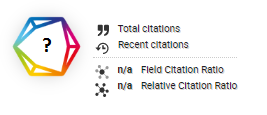TINGKAT PARTISIPASI MASYARAKAT DALAM PROMOSI KESEHATAN SEBAGAI UPAYA PENCEGAHAN DIARE PADA ANAK BALITA
DOI:
https://doi.org/10.46984/sebatik.v28i1.2430Abstract
Penelitian ini bertujuan untuk mengetahui tingkat partisipasi masyarakat dalam promosi kesehatan sebagai upaya pencegahan diare pada anak balita di wilayah kerja Puskesmas Sempaja. Metode yang digunakan adalah kuantitatif observasional dengan pendekatan cross-sectional. Penelitian ini dilakukan untuk mengevaluasi efektivitas strategi promosi kesehatan yang melibatkan advokasi, dukungan sosial, dan pemberdayaan masyarakat. Hasil penelitian menunjukkan bahwa nilai p advokasi adalah sebesar 0,001, dukungan sosial p = 0,008, dan pemberdayaan masyarakat p = 0,005. Dari hasil tersebut, dapat disimpulkan bahwa ada pengaruh yang signifikan antara advokasi, dukungan sosial, dan pemberdayaan masyarakat terhadap partisipasi masyarakat dalam pencegahan diare pada anak balita di wilayah kerja Puskesmas Sempaja. Advokasi dalam konteks ini berperan penting untuk mempengaruhi kebijakan publik melalui berbagai bentuk komunikasi persuasif yang strategis dan terencana guna mendapatkan komitmen dan dukungan dari pihak-pihak terkait. Dukungan sosial mencakup bantuan emosional dan praktis dari anggota komunitas yang dapat meningkatkan kesadaran dan tindakan pencegahan diare. Pemberdayaan masyarakat merupakan proses peningkatan kemampuan dan kemandirian masyarakat dalam menjaga dan meningkatkan kesehatan lingkungan mereka. Program promosi kesehatan yang dilakukan oleh Puskesmas Sempaja juga mencakup penyuluhan dan edukasi mengenai pentingnya menjaga kebersihan lingkungan dan praktik higiene yang baik untuk mencegah diare. Penelitian ini juga menyoroti pentingnya peran ibu dalam pencegahan diare, karena ibu merupakan pengasuh utama yang mempengaruhi kesehatan anak melalui pemberian asupan makanan, perawatan kesehatan, dan stimulasi mental. Selain itu, faktor-faktor seperti pendidikan, sosial budaya, dan ekonomi juga mempengaruhi sikap dan tanggapan masyarakat terhadap pencegahan diare. Dengan demikian, intervensi yang holistik dan melibatkan berbagai aspek kehidupan masyarakat diperlukan untuk meningkatkan efektivitas pencegahan diare pada anak balita.
References
Alsalamah, A., & Callinan, C. (2021). Adaptation of Kirkpatrick’s four-level model of training criteria to evaluate training programmes for head teachers. Education Sciences, 11(3), 1–25. https://doi.org/10.3390/educsci11030116
Aprih Santoso, L. W. (2021). The Effect of ODOI On Innovative Work Behavior and Employee Performance. Jurnal Manajemen, 25(2), 240. https://doi.org/10.24912/jm.v25i2.738
Aruta, J. J. B. R., Antazo, B. G., & Paceño, J. L. (2021). Self-Stigma Is Associated with Depression and Anxiety in a Collectivistic Context: The Adaptive Cultural Function of Self-Criticism. Journal of Psychology: Interdisciplinary and Applied, 155(2), 238–256. https://doi.org/10.1080/00223980.2021.1876620
Chenane, J. L., & Hammond, Q. (2022). Using Social Media to Recruit Participants for Scholarly Research: Lessons from African Female Immigrants in the United States. Journal of Criminal Justice Education, 33(4), 509–525. https://doi.org/10.1080/10511253.2021.1991411
CNN Indonesia. (2023, May 22). Batam Kekurangan Listrik, PLN Minta Pelanggan Industri Nyalakan Genset. CNN Indonesia. Diakses dari https://www.cnnindonesia.com/ekonomi/20230522131216-85-952406/batam-kekurangan-listrik-pln-minta-pelanggan-industri-nyalakan-genset
CNBC Indonesia. (2023, January 4). Yakin Bye-Batu Bara, Listrik EBT Cuma Nambah Secuil di 2023. CNBC Indonesia. Diakses dari https://www.cnbcindonesia.com/news/20230104180325-4-402839/yakin-bye-batu-bara-listrik-ebt-cuma-nambah-secuil-di-2023
De Jong, J. P. J., & Den Hartog, D. N. (2007). How leaders influence employees’ innovative behaviour. European Journal of Innovation Management, 10(1), 41–64. https://doi.org/10.1108/14601060710720546
Dewi, K. R. P., & Wibowo, A. (2017). Hubungan Kreativitas, Efikasi Diri dan Intensi Berwirausaha pada Mahasiswa. Jurnal Pendidikan Ekonomi Dan Bisnis (JPEB), 5(2), 162–175. https://doi.org/10.21009/jpeb.005.2.4
Fidalgo, P., Thormann, J., Kulyk, O., & Lencastre, J. A. (2020). Students’ perceptions on distance education: A multinational study. International Journal of Educational Technology in Higher Education, 17(1), 1–18. https://doi.org/10.1186/s41239-020-00194-2
Hamid, R. S. (2022). Analisis Dampak Aktivitas Pemasaran Media Sosial terhadap Kepercayaan. Jesya, 5(2), 1563–1570. https://doi.org/10.36778/jesya.v5i2.774
Hau, L. N., & Thuy, P. N. (2022). Enabling customer co-creation behavior at a distance: the case of patients using self-monitoring handheld devices in healthcare. Service Business, 16(1), 99–123. https://doi.org/10.1007/s11628-021-00451-y
Hayes, A. F. (2017). Introduction to Mediation, Moderation, and Conditional Process Analysis. In Guilford Publications. https://doi.org/10.4324/9781315148878-9
Janssen, O. (2004). How fairness perceptions make innovative behavior more or less stressful. Journal of Organizational Behavior, 25(2), 201–215. https://doi.org/10.1002/job.238
Jia, K., Zhu, T., Zhang, W., Rasool, S. F., Asghar, A., & Chin, T. (2022). The Linkage between Ethical Leadership, Well-Being, Work Engagement, and Innovative Work Behavior: The Empirical Evidence from the Higher Education Sector of China. International Journal of Environmental Research and Public Health, 19(9), 1–15. https://doi.org/10.3390/ijerph19095414
Karimi, S., Ahmadi Malek, F., Yaghoubi Farani, A., & Liobikienė, G. (2023). The Role of Transformational Leadership in Developing Innovative Work Behaviors: The Mediating Role of Employees’ Psychological Capital. Sustainability, 15(2), 1267. https://doi.org/10.3390/su15021267
Lai, F. Y., Tang, H. C., Lu, S. C., Lee, Y. C., & Lin, C. C. (2020). Transformational Leadership and Job Performance: The Mediating Role of Work Engagement. SAGE Open, 10(1). https://doi.org/10.1177/2158244019899085
Lei, F., Chen, W. T., Brecht, M. L., Zhang, Z. F., & Lee, E. (2022). Cross-Cultural Instrument Adaptation and Validation of Health Beliefs About Cancer Screening A Methodological Systematic Review. Cancer Nursing, 45(5), 387–396. https://doi.org/10.1097/NCC.0000000000001007
Lily, Y., & Dermawan, E. S. (2020). Pengaruh Leverage, Profitabilitas, Ukuran Perusahaan, Dan Kepemilikan Institusional Terhadap Manajemen Laba. Jurnal Paradigma Akuntansi, 2(4), 1799. https://doi.org/10.24912/jpa.v2i4.9376
Liu, Y., Vriend, T., & Janssen, O. (2021). To Be (Creative), or not to Be (Creative)? A Sensemaking Perspective to Creative Role Expectations. Journal of Business and Psychology, 36(1), 139–153. https://doi.org/10.1007/s10869-019-09669-0
Mohajan, H. K. (2020). Quantitative Research: A Successful Investigation in Natural and Social Sciences. Journal of Economic Development, Environment and People, 9(4), 52–79. https://mpra.ub.uni-muenchen.de/105149/
Nabila, G. P., Purba, F. D., & Hanami, Y. (2023). Adaptasi Alat Ukur Professional Quality of Life pada Psikolog Klinis di Fasilitas Kesehatan. Psyche 165 Journal, 16(1), 32–37. https://doi.org/10.35134/jpsy165.v16i1.224
Nasaj, M., & Badi, S. (2021). The influence of network building on the innovative work behaviour of self-monitoring individuals: Integrating personality and social capital perspectives. International Journal of Innovation Management, 25(4), 1–35. https://doi.org/10.1142/S1363919621500389
Ngien, A., & Hogan, B. (2023). The relationship between Zoom use with the camera on and Zoom fatigue: considering self-monitoring and social interaction anxiety. Information Communication and Society, 26(10), 2052–2070. https://doi.org/10.1080/1369118X.2022.2065214
Noor, S., & Tajik, O. (2022). Defining Simple Random Sampling in a Scientific Research. International Journal of Education & Language Studies Collection, 1(2), 78–82.
Nurwendah, W., & Suyanto, S. (2019). Relationship among Self-Motivation, Self-Efficacy and Achievement of High School Student in Biology. Journal of Physics: Conference Series, 1233(1). https://doi.org/10.1088/1742-6596/1233/1/012009
Ozyilmaz, A., Erdogan, B., & Karaeminogullari, A. (2018). Trust in organization as a moderator of the relationship between self-efficacy and workplace outcomes: A social cognitive theory-based examination. Journal of Occupational and Organizational Psychology, 91(1), 181–204. https://doi.org/10.1111/joop.12189
Podsakoff, P. M., MacKenzie, S. B., Lee, J. Y., & Podsakoff, N. P. (2003). Common Method Biases in Behavioral Research: A Critical Review of the Literature and Recommended Remedies. Journal of Applied Psychology, 88(5), 879–903. https://doi.org/10.1037/0021-9010.88.5.879
PoweredAus.(2018, Juni 5). Innovation in oil and gas is no longer optional. Diakses dari https://poweredaus.com.au/innovation-in-oil-and-gas-is-no-longer-optional/
PT P. (2023). Pertamina Bertengger di Peringkat 1 Fortune Indonesia 100. Pertamina News Release. Diakses dari https://www.pertamina.com/id/news-room/news-release/pertamina-bertengger-di-peringkat-1-fortune-indonesia-100
Renaldo, N., Sudarno, S., & Marice, H. B. (2020). the Improvement of Generation Z Financial Well-Being in Pekanbaru. Jurnal Manajemen Dan Kewirausahaan, 22(2), 142–151. https://doi.org/10.9744/jmk.22.2.142-151
Röhner, J., Thoss, P., & Uziel, L. (2023). Can People With Higher Versus Lower Scores on Impression Management or Self-Monitoring Be Identified Through Different Traces Under Faking? Educational and Psychological Measurement, 1–38. https://doi.org/10.1177/00131644231182598
Santoso, H., Abdinagoro, S. B., & Arief, M. (2019). The role of digital literacy in supporting performance through innovative work behavior: The case of indonesia’s telecommunications industry. International Journal of Technology, 10(8), 1558–1566. https://doi.org/10.14716/ijtech.v10i8.3432
Setyorini, E., Muhdiyanto, M., & Darmadi, R. A. (2022). Creative Self-Efficacy Dan Employee Performance: Efek Mediasi Innovative Work Behavior. 5th Prosiding Business and Economics Conference In Utilizing of Modern Technology 2022, 543–554. https://journal.unimma.ac.id/index.php/conference/article/view/7504
Tehseen, S., Ramayah, T., & Sajilan, S. (2017). Testing and Controlling for Common Method Variance: A Review of Available Methods. Journal of Management Sciences, 4(2), 142–168. https://doi.org/10.20547/jms.2014.1704202
Tran, K. T., Nguyen, P. V., Dang, T. T. U., & Ton, T. N. B. (2018). The impacts of the high-quality workplace relationships on job performance: A perspective on staff nurses in Vietnam. Behavioral Sciences, 8(12), 1–21. https://doi.org/10.3390/bs8120109
Wuryandari, R. D. (2021). Kegagalan Inovasi Pertamina Dalam Mengembangkan Rantai Supply Pemasaran Dan Ketergantungan Terhadap Impor BBM Produksi Kilang Minyak Singapura. Jejaring Administrasi Publik, 13(2), 84–100. https://doi.org/10.20473/jap.v13i2.31829
Yuan, F., & Woodman, R. W. (2010). Innovative behavior in the workplace: The role of performance and image outcome expectations. Academy of Management Journal, 53(2), 323–342. https://doi.org/10.5465/amj.2010.49388995
Yusliza, M. Y., Amirudin, A., Rahadi, R. A., Athirah, N. A. N. S., Ramayah, T., Muhammad, Z., Dal Mas, F., Massaro, M., Saputra, J., & Mokhlis, S. (2020). An investigation of pro-environmental behaviour and sustainable development in Malaysia. Sustainability (Switzerland), 12(17), 1–21. https://doi.org/10.3390/su12177083
Downloads
Published
How to Cite
Issue
Section
License
Copyright (c) 2024 Herni Johan

This work is licensed under a Creative Commons Attribution 4.0 International License.
Authors retain all their rights to the published works, such as (but not limited to) the following rights; Copyright and other proprietary rights relating to the article, such as patent rights, The right to use the substance of the article in own future works, including lectures and books, The right to reproduce the article for own purposes, The right to self-archive the article








